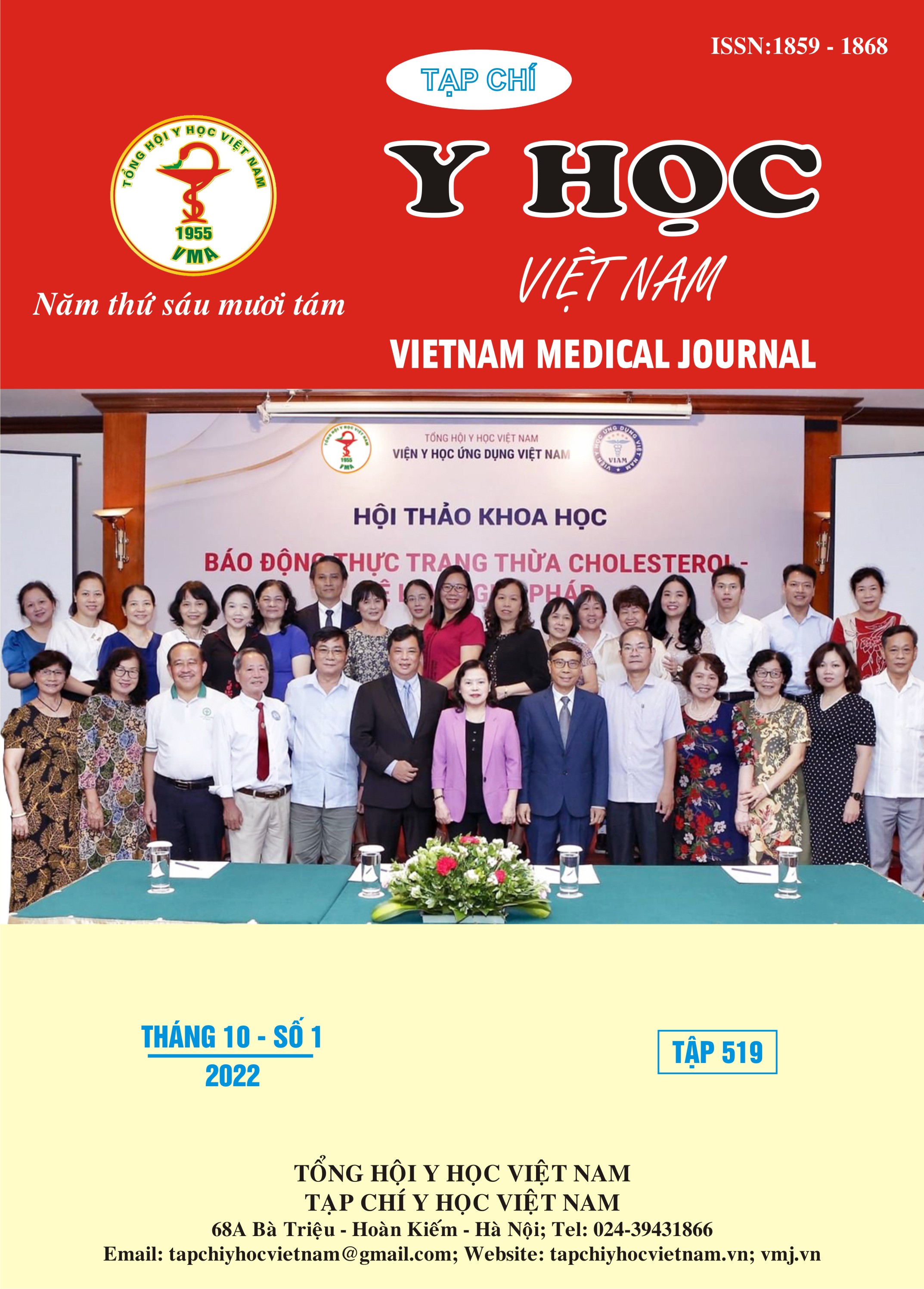SUMMARY THE HISTOLOGICAL CHARACTERISTICS OF MATURE B CELL LYMPHOMA AT BLOOD TRANSFUSION HEMATOLOGY HOSPITAL
Main Article Content
Abstract
Introduction: WHO classification of tumors of hematopoietic and lymphoid tissues, updated in 2016 (WHO 2016) is widely accepted for the diagnosis of lymphoma. B-cell lymphoma is the most common form of the disease. Evaluation of bone marrow involvement helps in staging. Bone marrow histology concordance and discordance with extramedullary organs. In addition, lymphoma also affects peripheral blood causing anemia, thrombocytopenia, and neutropenia. Objective: This study aimed to evaluate the incidence of B-cell lymphoma subtypes, the morphology of bone marrow involvement, the correlation histology between bone marrow and extramedullary organs, and the correlation between bone marrow and peripheral blood of B-cell lymphoma. Subjects and Methods: Cross-sectional description of B-cell lymphoma involvement in bone marrow from January 2019 to December 2020. Results and discussion: DLBCL accounts for the highest percentage of B-cell lymphoma subtypes. The incidence of bone marrow involvement was 64.8%. Bone marrow involvement was present in 80% of low-grade B-cell lymphomas, and 40% of high-grade variants. The highest incidence of bone marrow involvement was seen in LPL and BL (100%) and the lowest was found in DLBCL (25,6%). Diffuse pattern of infiltration was predominant (53%). 20% cases of discordance between bone marrow and extramedullary organs. Anemia is the most common feature in hematologically affected cases (72,7%). Conclusion: DLBCL accounts for the highest percentage of B-cell lymphoma subtypes. The frequency of bone marrow involvement in our B-cell lymphoma was found to be 64,8%. The pattern of infiltration was diffuse 53% predominantly. In some cases discordance between bone marrow and extramedullary organs. Anemia is the most common feature.
Article Details
Keywords
B-cell lymphoma, bone marrow trephine biopsy, bone marrow involvement, Blood Transfusion Hematology Hospital
References
2. Morton L. M., Wang S. S., Devesa S. S. et al. (2006), "Lymphoma incidence patterns by WHO subtype in the United States, 1992-2001", Blood. 107 (1), pp. 265-276.
3. Lambertenghi-Deliliers G., Annaloro C., Soligo D. et al. (1992), "Incidence and histological features of bone marrow involvement in malignant lymphomas", Annals of hematology. 65 (2), pp. 61-65.
4. Kumar S., Rau A. R., Naik R. et al. (2009), "Bone marrow biopsy in non-Hodgkin lymphoma: a morphological study", Indian Journal of pathology and microbiology. 52 (3), pp. 332.
5. Hassan K., Ikram N., Bukhari K. P. et al. (1995), "The Pattern of Bone Marrow Infiltration in Non-Hodgkin’s Lymphornas", .
6. Arber D. A. , George T. I. (2005), "Bone marrow biopsy involvement by non-Hodgkin's lymphoma: frequency of lymphoma types, patterns, blood involvement, and discordance with other sites in 450 specimens", The American journal of surgical pathology. 29 (12), pp. 1549-1557.
7. Yao Z., Deng L., Xu-Monette Z. Y. et al. (2018), "Concordant bone marrow involvement of diffuse large B-cell lymphoma represents a distinct clinical and biological entity in the era of immunotherapy", Leukemia. 32 (2), pp. 353-363.
8. L.H S., D.W S., M C. et al. (2011), "Impact of concordant and discordant bone marrow involvement on outcome in diffuse large B-cell lymphoma treated with R-CHOP", J clin oncol. 29 (11), pp. 1452-1457.


